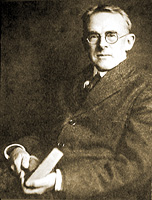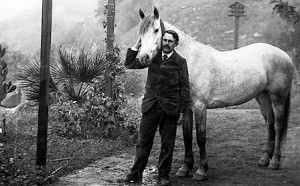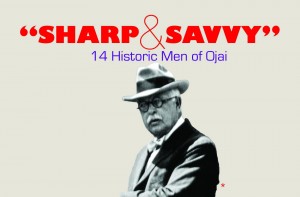This article first appeared in the Ojai Valley News on April 9, 1999. It is reprinted here with their permission.
Library was the focus of the community 100 years ago
by David Mason
“Ventura house-mover John Brahey is busy moving the Nordhoff Library onto the library (owned) lot south of the present location.”
— Ventura Signal, October 1908
Between 1897 and 1917 philanthropist Andrew Carnegie endowed more than 1,400 public libraries.
He could very well have been inspired by the Ojai Valley’s Library, for by the time Carnegie’s lengthy series of endowments got underway, the town of Nordhoff, now Ojai, had been enjoying a public library for five years.
The library in Nordhoff may not have been a Carnegie library, and Carnegie probably never knew it existed, but the Ojai Valley’s residents were proud of what they had, for they had worked hard to establish this bit of culture in their community.
When the library committee first met in October 1892, it was to discuss plans to raise money to start a library in the town. The people of the valley were so excited about the idea of having a local library that they volunteered many hours to bring it to a reality.
By March 1893 Sherman D. Thacher, founder of The Thacher School, announced that the Thacher family and some friends were willing to donate $500 toward the purchase of books if the people of the little valley could come up with the money for the building and its maintenance. This kind and generous gesture would be the inspiration for an all-out campaign to raise the rest of the needed funds.
After many lawn parties, ice cream socials and teas, the money was raised in a very short time. Construction of the library started in July 1893 and was completed in August, nearly 30 days later.
In 1937 Zaidee Soule, longtime local librarian writing on the history of the library for the community’s newspaper, The Ojai, wrote, “The building was constructed 100 feet south of Ojai Avenue and just east of (Stewart) creek on the Barrow property.”
The building, a single room, was only 16 feet by 24 feet, with a porch running along the east side.
The library was named The George Thacher Memorial Free Library. The name came from one of the Thacher boys who had died at an early age and the people of the valley were proud to honor this boy who had touched the hearts of so many.

The first librarian was Mrs. J.K. Newton and the library was open from 4 to 6 p.m. on Tuesday, Thursday and Saturday and from 7 to 8:30 p.m. on Sunday.
The library was a success from the first day as the people of the valley were anxious to gain new knowledge.
The success of the library became even more evident in 1904. Since the library did not own the land on which it sat, the library board of directors purchased the lot next door, further south on Montgomery Street, and had the building moved onto their own property and added another room.
In January 1916 the library officially became a branch of the Ventura County Library system, the first in the county. The operating expenses, maintenance and upkeep became the responsibility of the county.
After many years, it was apparent that the library was going to outgrow its building and changes would have to be considered. A number of buildings were being built on the south side of the main street, hiding the library from view, so the library board felt that the location would also have to be changed.
The town was growing rapidly, and with Ojai’s greatest benefactor Mr. E.D. Libbey changing the appearance of the downtown, it was only natural that a new library, designed with the same flair as the rest of the town, would be in keeping with the general plan.
The new library committee was headed by Sherman D. Thacher, who had also been instrumental in the founding of the original library in 1893, and it fell to the Ojai Civic Center Association in 1920 to find a buyer for the existing library property.
After some time, part of the library lot was sold to the Ventura County Fire Department for a new fire station, now [the Ojai Vineyard Tasting Room], and a new group in town called The Ojai Community Players, now the Ojai Art Center, took an option on the remaining portion of the land.
The city had come in possession of a lot on the corner of Aliso and Lion streets through the generosity of Mr. and Mrs. Daniel Smith. The city agreed to pay the Smiths $312.50 for the lot because the city had installed new sewers and widened the streets and had ruined the lot for building a house.
However, Mrs. Smith deemed it in the town’s best interest to accept only a $10 gold piece for the property, an amount she said would “make it legal.” The little old library building was then moved onto the small city-owned lot.
With the pending sale of the library property, the committee put the fundraising efforts into full force and the first person to donate was Mr. Libbey who donated $10,000 worth of stock to the fund. Many others joined Libbey with donations in various amounts. Finally, when enough money was raised, definite plans were started. By the time the committee had raised all the needed funds, Mr. Libbey had passed away and his estate owned the land that the library committee had decided upon for their new building. It was a beautiful corner lot at South Ventura Street and Ojai Avenue. The library committee contacted the Libbey estate to ask if the lot could be purchased for the new library. The answer came back from the trustees of the estate saying, “It had always been Mr. Libbey’s dream to have a library at that site, so they wished to present the lot, worth $10,000, as a free gift to the Ojai Community.”
The architect selected by the library committee was the famous Carleton Winslow. Winslow was 42 and well-respected in the state of California. He had first studied architecture at the Chicago Art Institute, and for more advanced training, he spent time at the Beaux Arts Academy of Paris.
Upon graduating, Winslow found employment with the architectural firm of Cram, Goodhue and Ferguson in New York City. The company became responsible for the construction of the buildings for the Panama-Pacific International Exposition in San Francisco in 1915 and sent Winslow to supervise the job.
After the exposition, Winslow remained in California and opened an architectural office in Los Angeles and later in Santa Barbara. He was one of the most influential figures in the realization of the Spanish Colonial Revival and Mediterranean styles of architecture in the state of California.
It was only natural that the Ojai Library Committee would select such a man to design a building that would not only match the downtown architectural style, but would complement and add uniformity to the town center.
Samuel J. Hudiburg was the building contractor. Hudiburg was born in Santa Paula and received his schooling in Ojai. In 1906, he learned the carpenter’s trade from J.C. Leslie, a pioneer contractor in Ojai, and Hudiburg worked for Leslie until 1919, when he went into contracting for himself. During Hudiburg’s years as a contractor, he built many of the finest residences and commercial buildings in the valley.
On Dec. 1, 1927, the plans for the new library were approved and construction started. The building was to include a reading room, 23 feet by 62 feet, and additional small rooms for magazines, a work room, etc. An 8-foot porch was planned for the front of the building.
On April 15, 1928, the new library was officially opened. Many books being published that year undoubtedly helped to fill the shelves – among them were “West-Running Brook” by Robert Frost, “The Man Who Knew Coolidge” by Sinclair Lewis, “Good Morning America” by Carl Sandburg and “Boston” by Upton Sinclair.
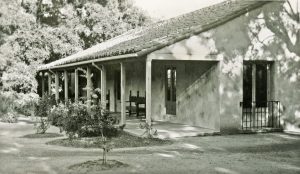
By 1979 the need for an additional room to the library was brought to the attention of the Ventura County Board of Supervisors and J.K. “Ken” MacDonald, supervisor from Ojai, would spend the next few years working diligently to accomplish the goal of a new wing.
With the cooperation of John Van Dyke, who owned the vacant lot between his travel agency and the library, the land was secured at a reasonable price.
MacDonald was able to persuade the Board of Supervisors to finance a portion of the project and Friends of the Library, with assistance from librarian Ellen Harmon, were able to secure the needed funds for completion.
The addition was completed in May 1981 and, by a resolution from the Ventura County Board of Supervisors, the new wing was named the “J.K. ‘Ken’ MacDonald Annex.”
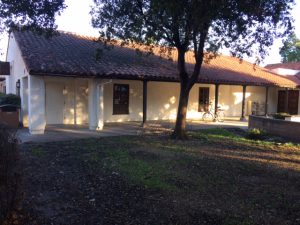
The original 1893 library building became the clubhouse for the Boy Scouts and they used it for their meetings until 1949, when it was deeded to the Girl Scouts for their use.
In 1989 the Girl Scouts were forced to abandon the building as it was found to be unsafe and would have required a lot of changes to bring it up to health and safety codes.
The majority of the building is still in its original condition, and today, more than 100 years later, the building is preserved and maintained in a fashion worthy of its dignity.

